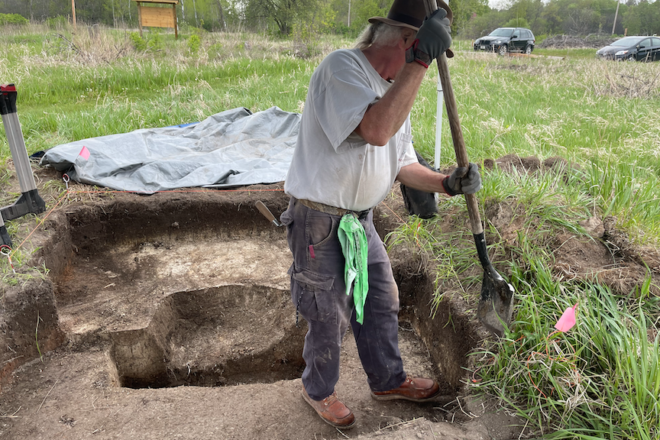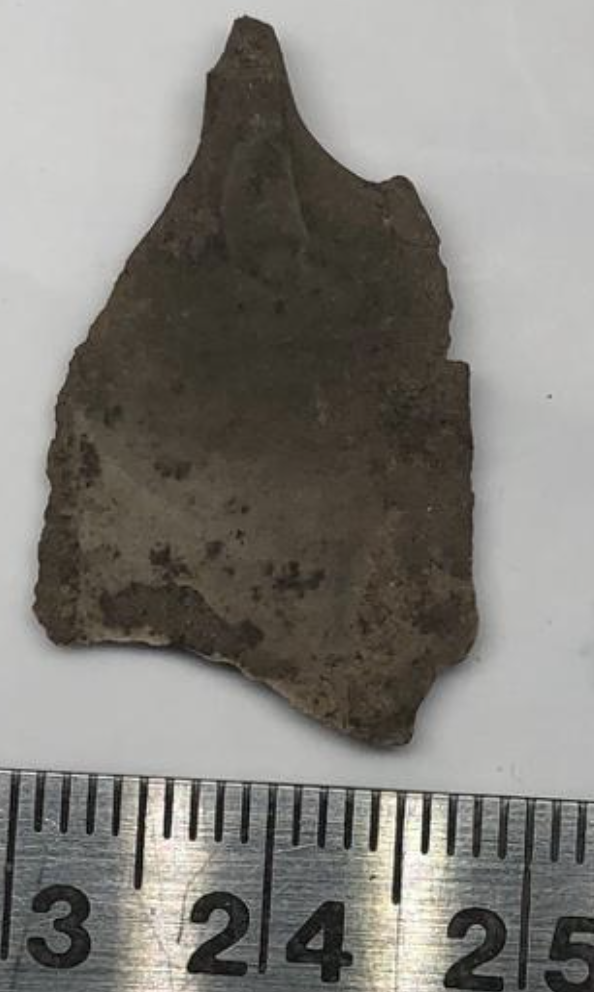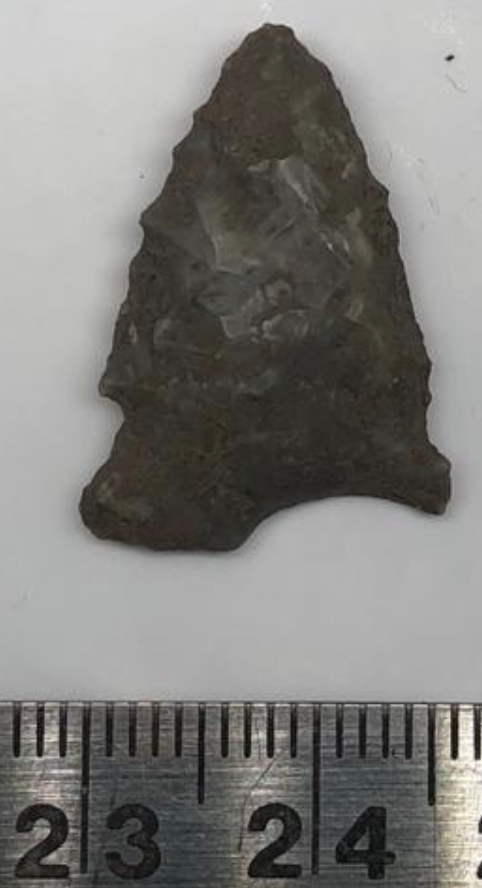Stone Tools Recovered at Crossroads Test Positive for Human, Beaver Blood
- Share
- Tweet
- Pin
- Share

First proof of interpersonal violence among First Nations people of the Late Woodland era in Wisconsin
by ROBERT J. JESKE, Professor Emeritus, Department of Anthropology, UW-Milwaukee; and Adjunct Curator of Anthropology, Milwaukee Public Museum
Editor’s Note from Debra Fitzgerald: During the past nine years, archaeologists have been digging pits at three Crossroads dig sites at Big Creek, Ida Bay and The Cove. The flintknapping residue from tool making, intact arrowheads and clay-pot fragments they’ve found were made and used by people who lived during the Middle Woodland (300 BCE – 400 CE) and Late Woodland (400-1200 CE) eras, between 1,200 and 2,000 years ago.
They’ve also found the dark stains that are cultural features indicative of past human activity, including a semi-subterranean, keyhole-shaped, wigwam type of construction. Another stain pointed them to a basin-shaped food-storage/garbage pit that they were working on last summer when I joined them while working on a story.
Last week, Coggin Heeringa, the program director and naturalist at Crossroads at Big Creek, forwarded some of the findings that have developed from the The Cove site, discussed below by Robert “Bob” Jeske, who is one of the archaeologists at the dig.
We know that people hunted and gathered wild plants and animals at The Cove site between AD 800 and 1200, but we have only a vague understanding of how they used their tools for tasks such as hunting and processing animals for food, clothing and other tools. However, archaeologists have several ways to get at these questions.
One of these ways is crossover immunoelectrophoresis (CIEP) analysis. CIEP works much like the way that medical doctors determine whether a person is allergic to animals. Blood protein can be preserved in microscopic cracks on the surface of stone tools. We can chemically extract that protein from the tools and expose it to antisera from known animals. An immune reaction to the antisera shows that the tool was used on that animal.

The piercer with beaver blood 
The projectile point with human blood.
We sent 20 artifacts from The Cove site to NWAI in Portland, Oregon, a laboratory that specializes in CIEP. NWAI exposed our 20 tools to antisera for deer, dog, rabbit, beaver, squirrel and human. Two tools had positive hits. One tool tested positive for human blood, and another was positive for beaver.
A 10% rate of successful hits is not unusual. We tested against six kinds of blood types. People used tools on many other mammals, fish and birds, which we did not test for. These tools could be tested against other animals in the future. But even two tools let us say a lot more about the activities at The Cove site than we could previously.
First, we know that people processed beaver at the site. Microwear analysis shows that the artifact was used to pierce hide. So we know that the beaver was used for its hide or fur, not just as food.
Second, we know that the people at The Cove site were engaged in interpersonal violence. How common such violence was is not clear, but this is the first blood-residue evidence of violence in the Late Woodland period in Wisconsin.
Only one other site in Wisconsin has had its tools analyzed using a combination of microwear and blood-residue analyses. The maize farmers at Crescent Bay Hunt Club (ca. AD 1100-1450) used tools to hunt deer, process deer and bison hides, butcher dogs, process plants and shoot people.
Another 20 tools are ready for CIEP analysis. Tools from the Ida Bay site (AD 100-800) are also available for analysis. Combined, the Crossroads tools will provide unique and important information on more than 1,000 years of Native American lifeways in Door County.


